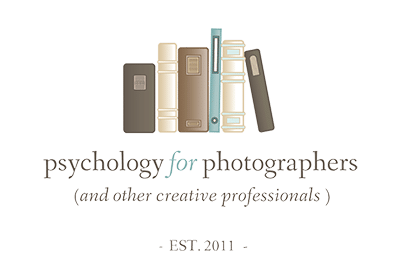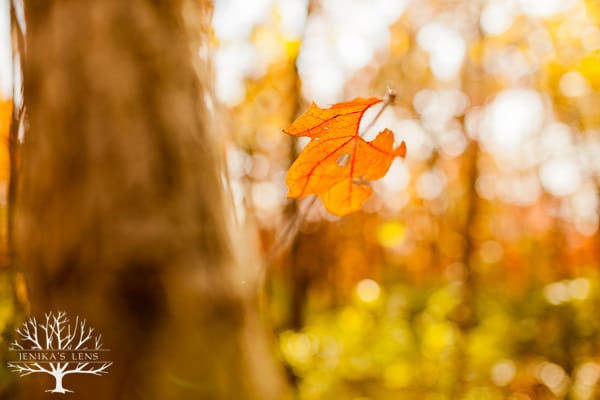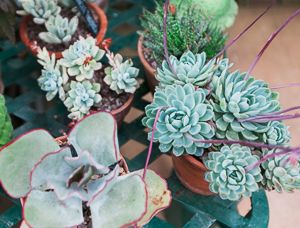The Blog Library
What We Can and Can’t Learn From Our Photography ‘Heroes’
When I was a baby, I went through a period of time where my skin turned slightly orange.
Why? Because I utterly refused to eat anything other than sweet potatoes. No joke – I’d clench my gums together and spit anything else out. (My poor mother even tried to trick me with every other orange food she could think of, but yes, I could tell that mashed carrots were NOT sweet potatoes.) And I suffered the consequences – my body literally started to resemble the only nourishment I would give it, and thus for a little while I had an oompa-loompa-esque glow.
It’s simple, really – we start to resemble what we consume.
And that’s not just a statement about food – it’s about everything we read, see, hear, or pay attention to.
So it’s no surprise that thoughtful consumption is as important as action in learning a craft.
Roy Peter Clark wrote: “A good vocabulary comes from many sources, but especially from habitual reading – deep and wide – on topics both big and small.”
To be a better writer, we must read a lot of writing – and this applies to anything. To be a better chef, you have to experience a variety of food. To be a better photographer, you’ve got to get your eyeballs on a whole lot of photography.
We work from the ‘vocabulary’ that is available to our mind – whether it is a vocabulary of words or vegetables or lighting techniques – so we must gain this vocabulary from a rich variety of sources.
A life mentor of mine once sent me a concentrated piece of advice: “look at a few hundred thousand photographs each year, take a minimum of one thousand photographs each week.” To elaborate on this: Use your eyes – a lot! Learn where light comes from and where it should come from. Learn what should be focused upon and what should be taken away. Study what makes something good, and look for what would have made it better. By doing so our eyes will be trained by repetition to recognize a good shot, and how to reframe one when it’s not.
Of course, don’t become bogged down in observation – action is a key part of it (see: minimum of 1000 photos each week). However, “deep and wide” consumption of various good work is a key part of producing good work.

This means we can enjoy, but must eventually also look past any “hero” photographers we may have.
There is a pattern, particularly among new photographers, of picking one or two photography ‘heroes’ we admire, and stalking them with fervid interest. Watching every move, devouring every photograph, noticing every branding element, and wanting to do it just like them. As we get busier, this fanship may eventually fade, but the dawn of many hobbies and businesses is downright overshadowed by someone else whose business, photographs, or lifestyle we admire. Does this sound familiar?
Stay with me here: I’m not saying it’s a terrible thing. Concentrated observation of one person’s process can bring rich insights. What we are drawn to can tell us something about what we desire. But precise emulation of that person’s life and style should never be the goal – not even the silent, unspoken one. We should not feel we have “arrived” when our lives closely resemble a hero’s. So doing would only guarantee that by definition, we will always be second best to someone else at what we do.
But there’s even more to it than that:
Spending too much time looking at everything just one person creates will impoverish our learning environment and hobble our own creativity.
When we deeply admire one person’s way of doing things, we want to see the world as they do, and solve problems as they do. Our businesses starts to resemble theirs – and not always on purpose. It’s because we absorb and reproduce what we surround ourselves with. If we only have one source to draw from, we will start to resemble that source. If I only read Shakespeare, my blog posts would start to read a lot like Shakespeare, fair reader!
Unconscious copycatting can be diluted and lessened by drawing from a wide variety of excellent work, rather than obsessive consumption of one successful person’s efforts.

And listen up: The rules of statistics tell us that relying on one data point will lead you away from the truth. Only by collecting from many sources do real, applicable patterns appear.
One person has one way of doing things, and their own alchemy of style, luck, talent, circumstance, and work got them where they are. But those stars will never align for you in the same way. You’ve got your very own constellation to worry about, and it’ll never produce the same results.
You will, however, uncover ‘rules’ and principles to help you out by looking across many people, and see what consistently emerges in spite of varying talents and circumstances. If you see an element of success that people from thirty different backgrounds have in common, then you’re on to something. THAT is what you want to pay attention to – not how one shining person managed to find success.
Don’t get me wrong – intense study of one person or one photograph can teach us a lot.
For example, Strobist author David Hobby pointed out that you can learn lighting very quickly by breaking down and trying to replicate a single photograph done by someone else. This is not copycatting to fluff up a portfolio, it’s a learning method to uncover techniques you can later apply in the service of your own vision. He calls this the “Imitate, then Innovate” method. Artists have done this for centuries. You’re not studying to do it like someone else – you’re studying so you have the tools to do it like you. Much can be learned by such intense study, breaking one thing down to look at the elements. Why does this photograph work? Where is the light coming from? What do I do with my own lights to re-create the same thing? How can I improvise when I have different equipment and circumstances?
Deep, critical questioning can be applied to any person, brand, or business – and we will learn from it. (How is this awesome website put together? What makes that person’s brand really tick? Why does that commercial make me want to buy those shoes?) Once you see the building blocks, you can use them to make whatever you want. But trying to get all the building blocks from one person guarantees that you’ll have an incomplete set.
So just as you wouldn’t try to learn English from only reading Mark Twain, don’t try to learn photography from following only one or two people.
You deserve wider horizons than that. You’ve got to expand, seek, consume, and build your photography vocabulary the same way you built your verbal one – from every source imaginable, with such variety and certainty that you can no longer trace the origin of any one word. Only then will you create poetry – visual, written, or otherwise – that comes straight from you.
Get to it.




You are a gold mine. Will you always call me “fair reader”? Pretty please?
Verily! 😉
Perfect, perfect post. Very well put and so so true, fair blogger. So true. 🙂
Love this article! Is being a picky eater part of being a photographer? Ha ha all I would ever eat when I was little was yogurt and cold cereal.
Beautifully written! I feel like you wrote this just for me! I have a handful of photographers I totally want to emulate, but I realize now that I have to utilize the how’s and what’s and why’s that make them so successful if I want to experience that as well. It’s kind of intimidating to find my own specific style, but it’s exciting too! Thanks for this post!
Thanks, Jenika. Love you, and your mind and desire to share wisdom with all. You are wonderful at giving out some thought-provoking ideas 🙂
Thank you so much, I love this post. It helps you see things and it does make you think and revise with in you, what you are doing and not doing with your photography.
God bless!
Very inspiring!!
Hello! Friend recommended your site to me recently! I was a psych minor (started off as a major)– so I still love it, and am enjoying your site. Very fun.
I had to giggle at this post– I, too, went through a period with orange cheeks when I was a baby, too:) Carrots, sweet potatoes, and squash!!
Indeed– too much of a good thing can make your cheeks one color, heh.